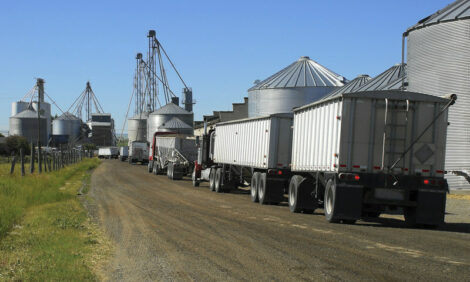



Pork Commentary: March 1st Hogs and Pigs Report
US - Last Friday the USDA released their March 1st Hogs and Pigs Inventory Report. Lets take a look at some of the categories.
Since the first of December the breeding herd has expanded 14,000. This is only ¼ if of 1%. Since March 1st of 2004 (2 years), the US breeding herd has expanded 64,000 (1%). In two years of what has been the most profitable in a decade, we have expanded just over 2000 breeding animals per month.
Expansion is not a myth or a fable but it is a lot less of a story than many have been reporting. Going forward we expect to see minimal growth in the breeding herd and the soothsayers who predicted 200,000 more in 2006 are going to be wrong. Fifty four cent lean hogs are not getting many new sow barns built or renovating old ones.

The USDA estimates 320,000 more pigs and hogs in inventory than a year ago. If it takes 27 weeks (189 days) to get an average pig from birth to market, this would calculate to 12,000 more market hogs on average a week this year compared to last. Who knows for sure how accurate the USDA numbers are but as point of reference, in the first three months of 2006 the US has slaughtered about 9000 more a week than a year ago.
At the end of the day the good news for our industry is the market inventory has had only incremental increases just like the breeding herd. Even at static per capita consumption US population growth and export markets should be able to handle these numbers with ease if it were not for the massive increase in chicken and beef production.

The last three years farrowings have not moved in the December to February time period. They are remarkably close. Not much productivity growth here.

Steady progress in pig per litter size, about 1% per year.

If our calculations are correct the US over the last 12 months has averaged 1.921 farrowings per breeding animal. The US has averaged 17.36 pigs per breeding animal per year. There has been a productivity gain in our industry but there is lots of room for improvement. It makes you wonder what our industries real cost of production is if 17.36 is the average.
Conclusion
Report shows little change from a year ago. Hog prices will be affected more by excess chicken and beef production (+70 million pounds a week- YTD). The report is positive.
Interesting Perspective
Jim Cramer, the high octane host of Mad Money on MSNBC had some interesting perspectives last week as reported on DTN. “You want to make money off the bird flu pandemic? You got to stop thinking about livestock. We already can’t eat beef because of mad cow and cholesterol, and now with bird flu, people won’t be able to eat chicken either”, he said. (he failed to mention e-coli and salmonella) “Pigs are the only animals left without some horrible disease that renders them inedible”, he said. So that’s why he likes Smithfield Foods. He called the company the “best of breed in the pork industry”, and said it was very well run. He expects Smithfield’s stock should go up soon. Let’s hope Mr. Cramer is on the mark, and let’s hope that pork demand will go up despite the “other white meat” program.
A few weeks ago we wrote how most, if not all of the Integrated Producer Packers stocks were suffering, being down from previous highs. They used to say that how goes General Motors so goes America, (not anymore we hope). Smithfield is the largest hog producer in America, and the world. If its stock goes up it will be because of higher hog prices as much as anything. If Cramer is right, Smithfield’s appreciation could lift all of our boats. As goes Smithfield, so goes...
Source: Jim Long, Genesus Genetics / Keystone Pig Advancement Inc. - 3rd April 2006
Reproduced courtesy Farms.com








